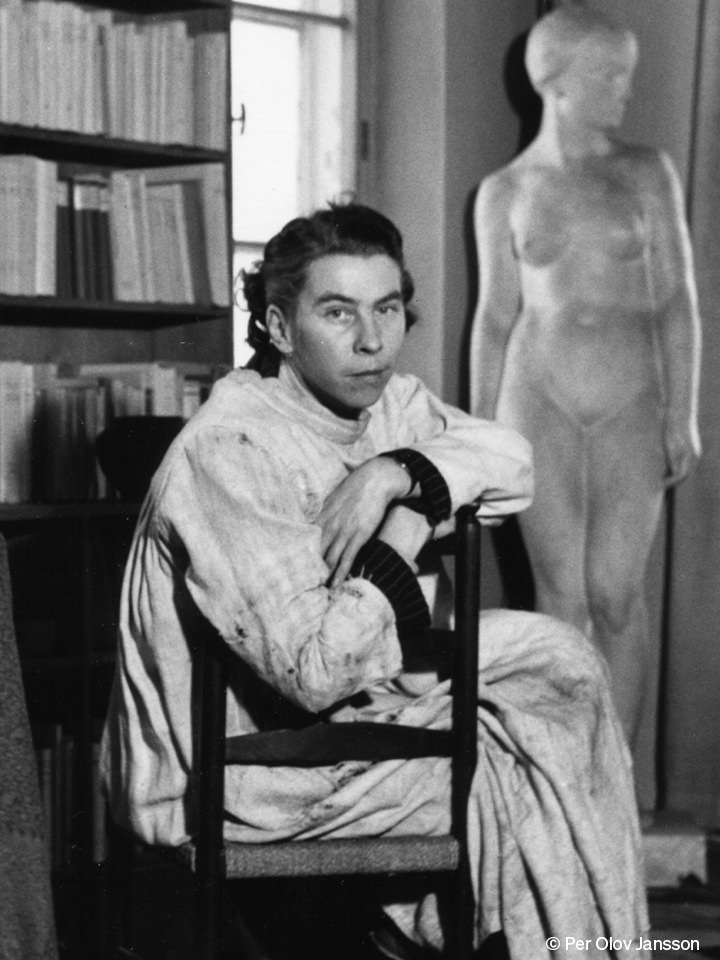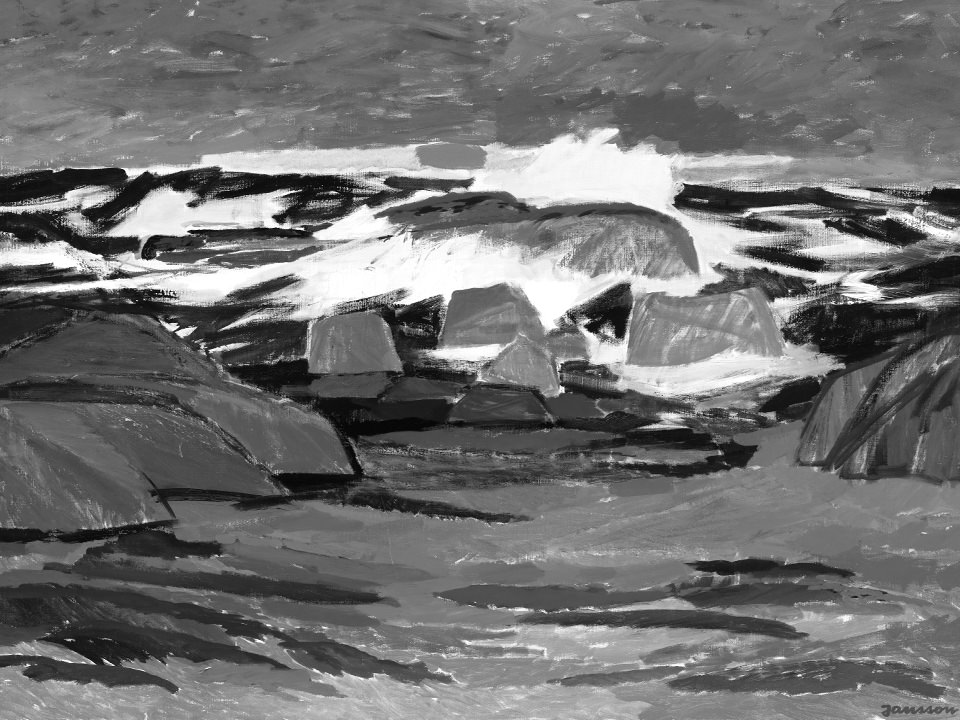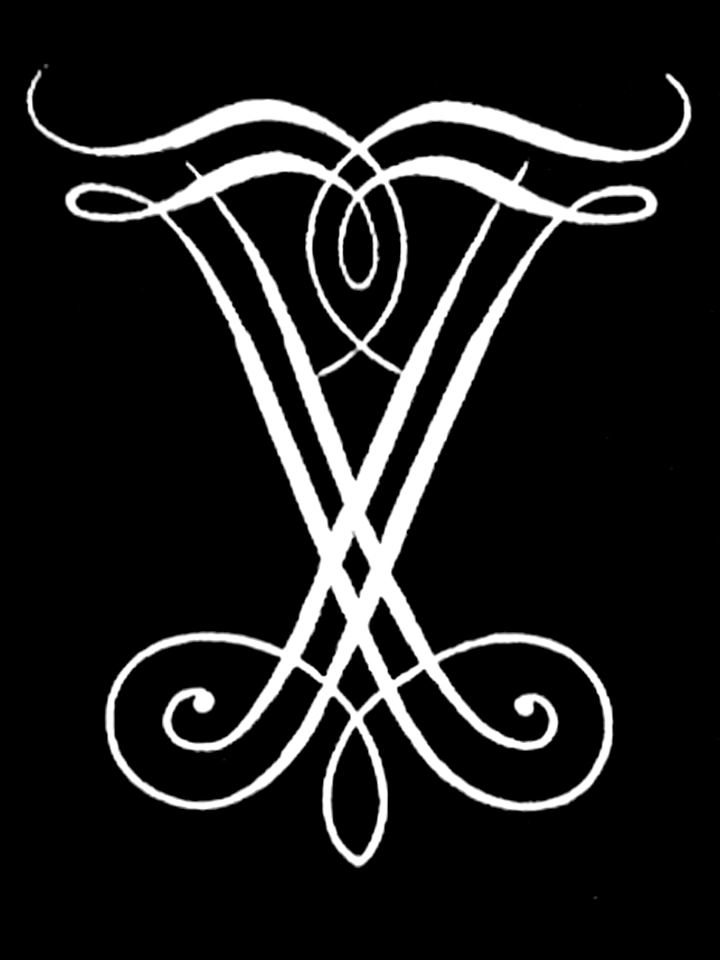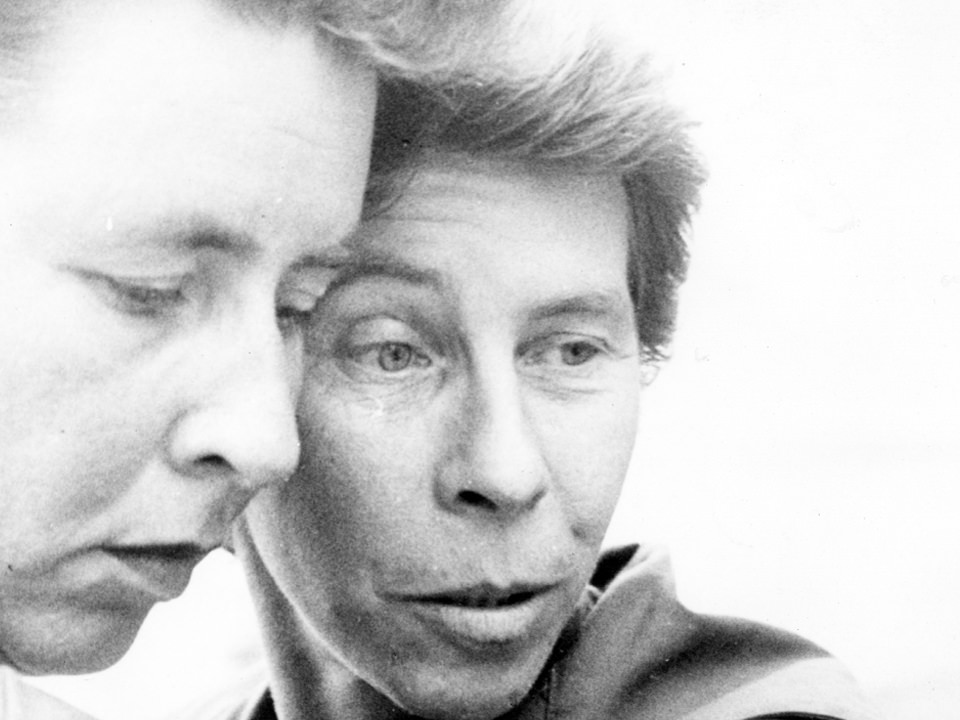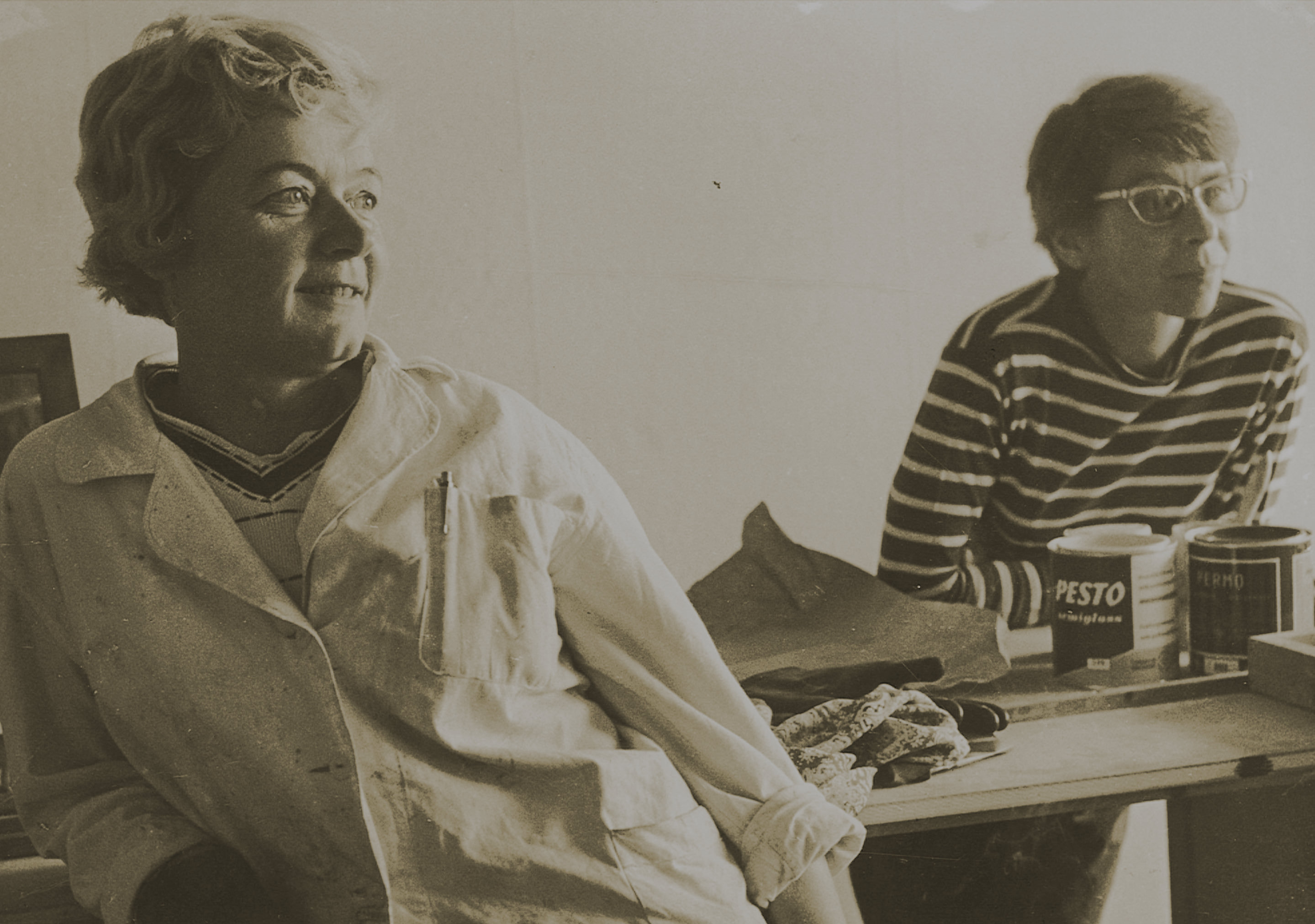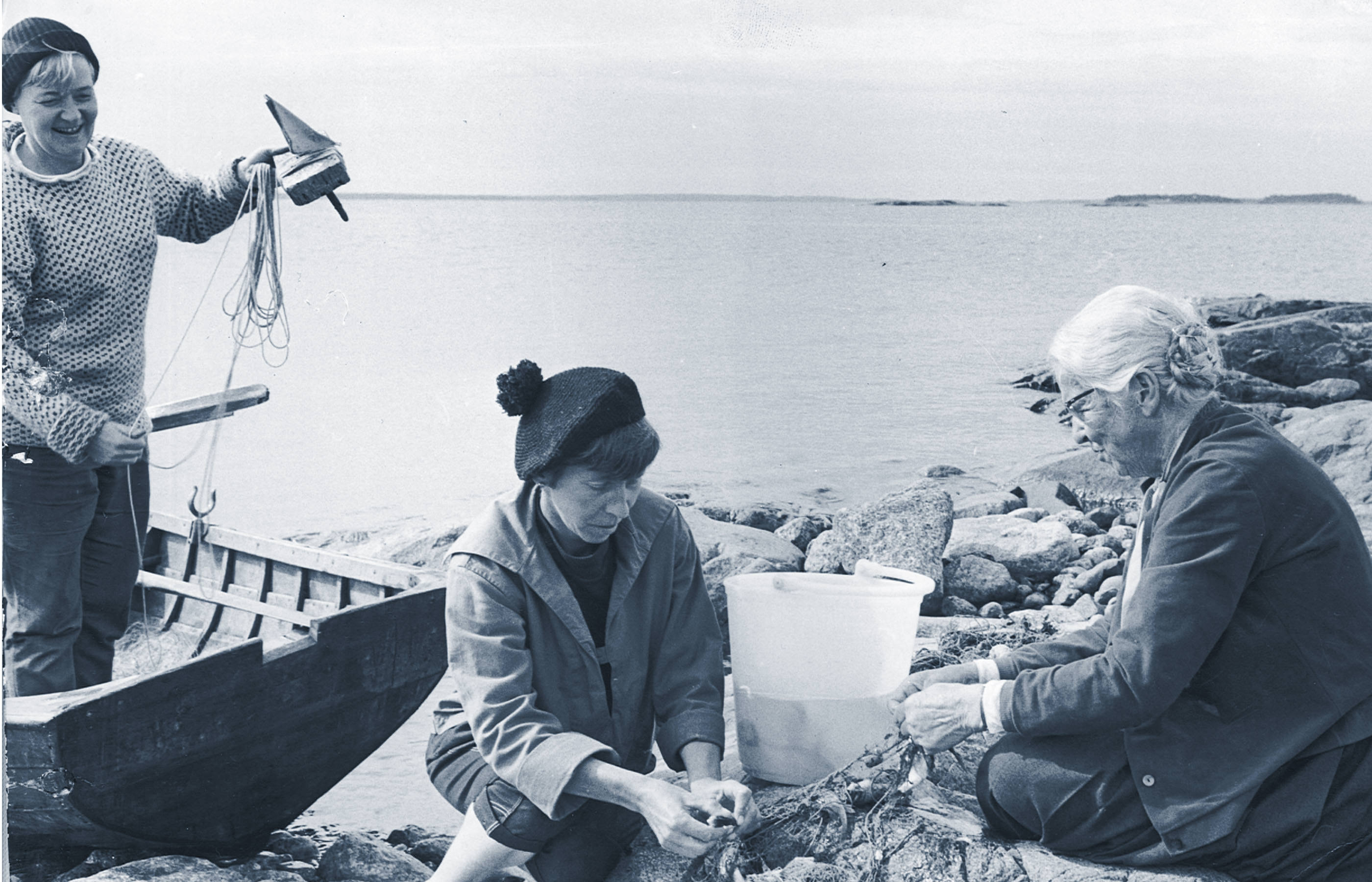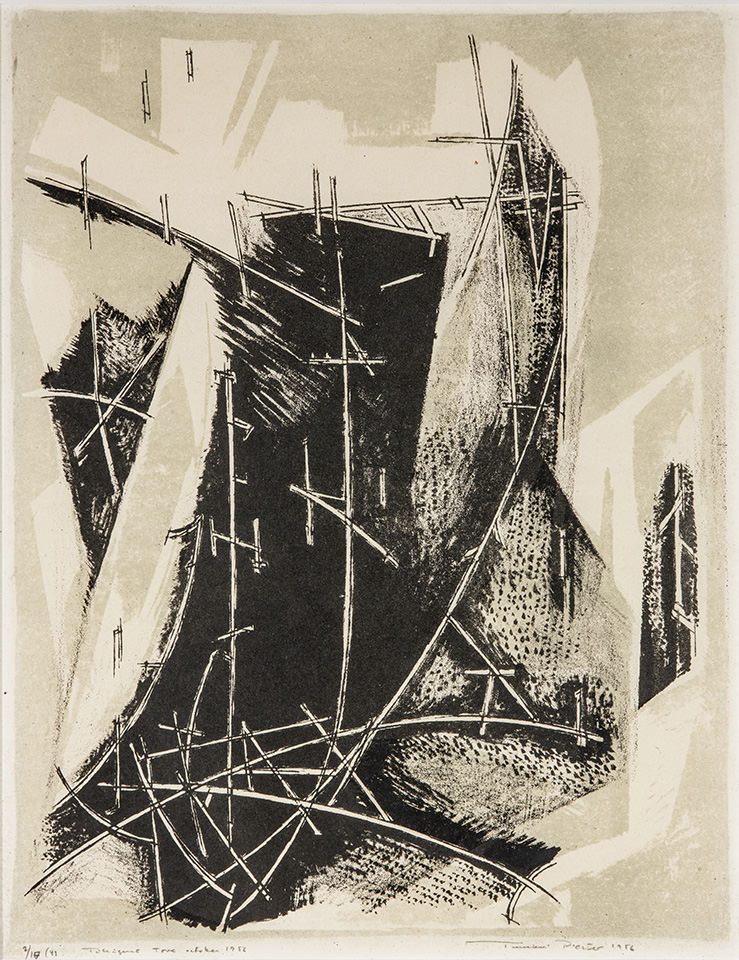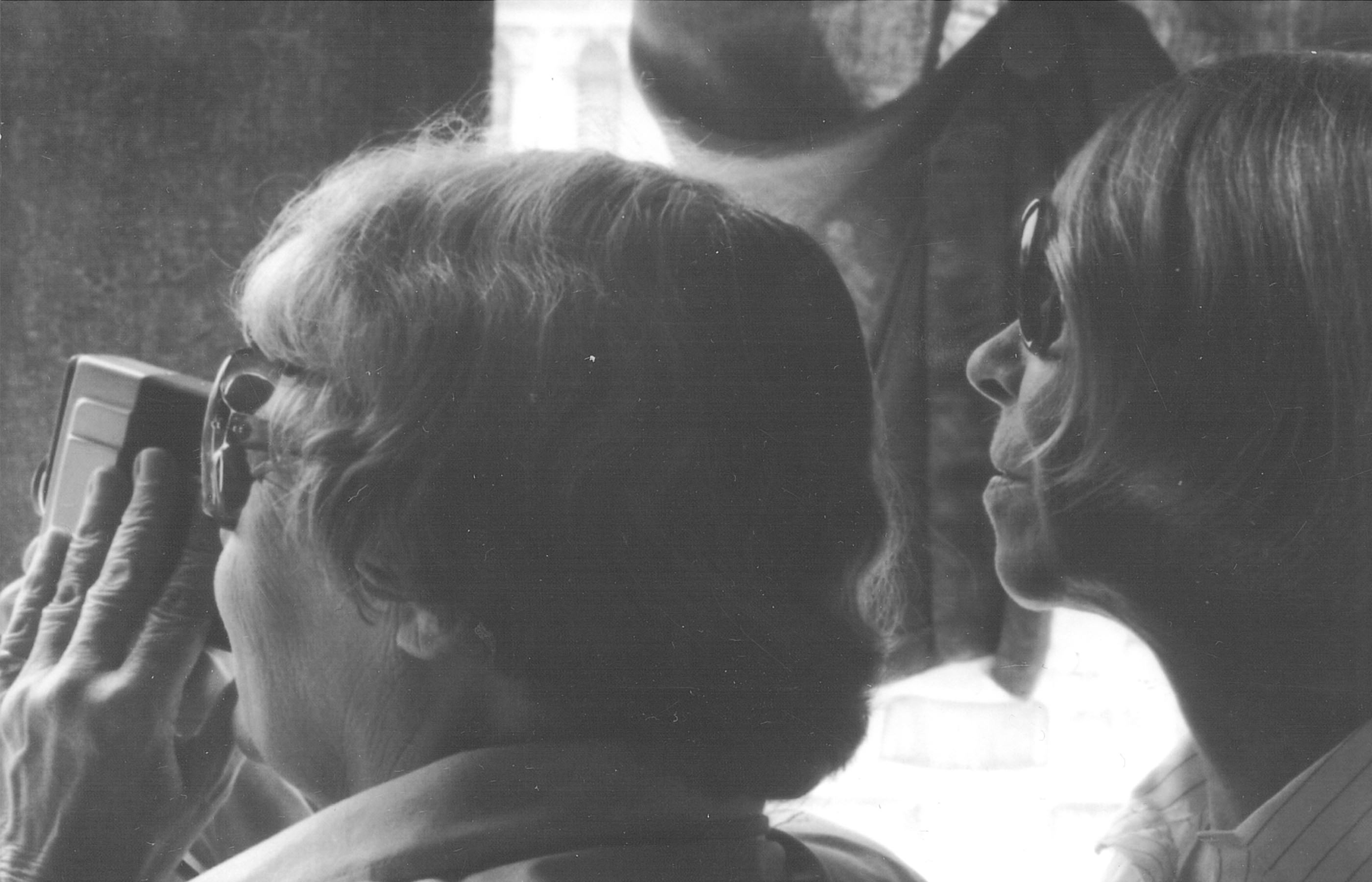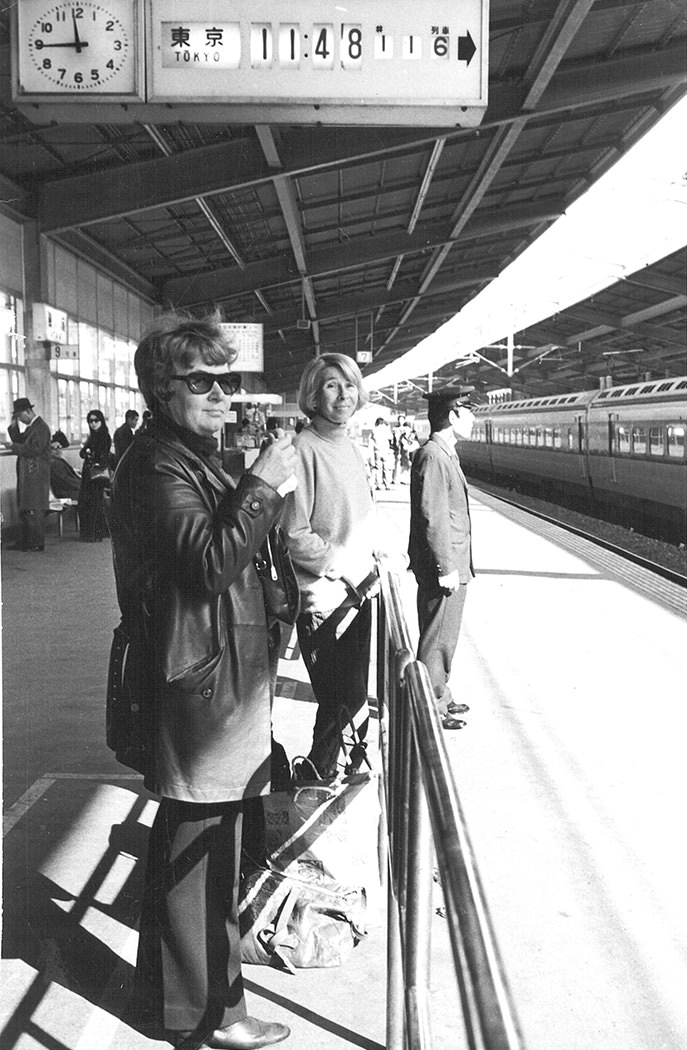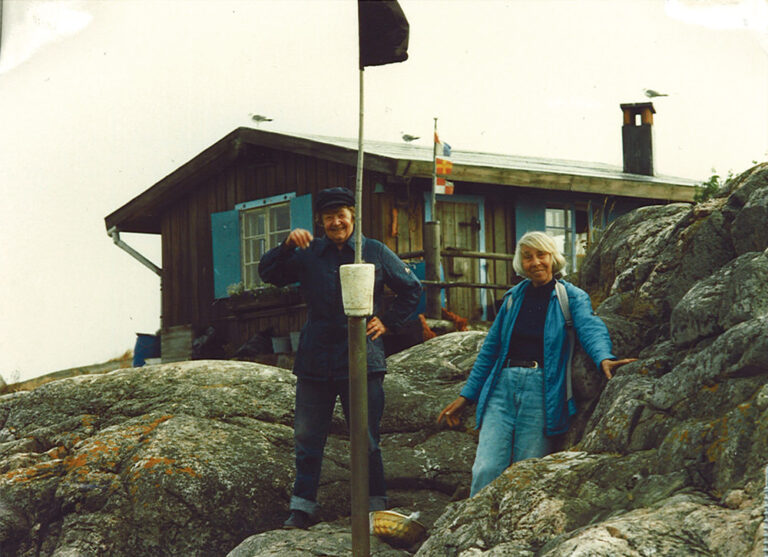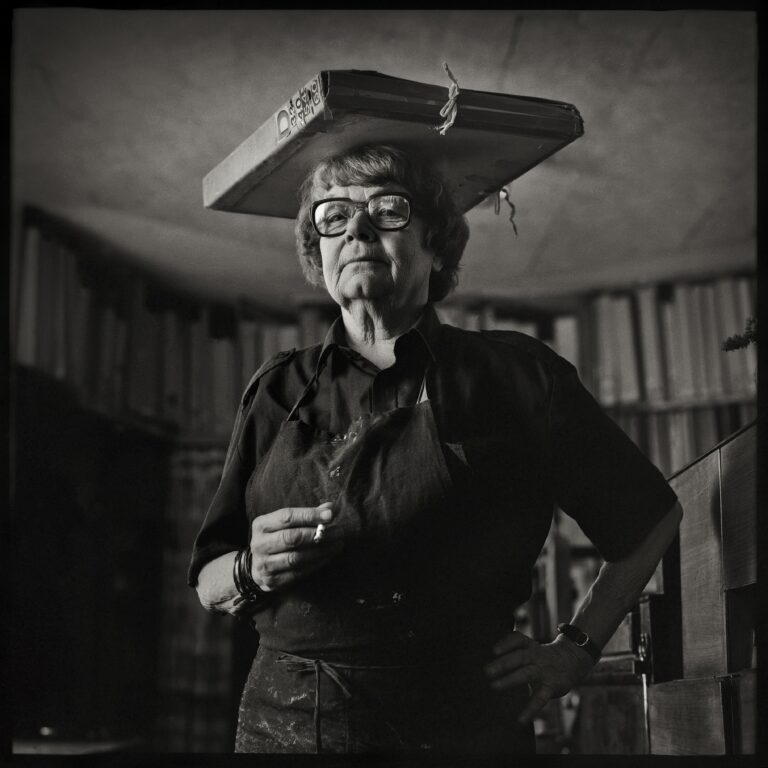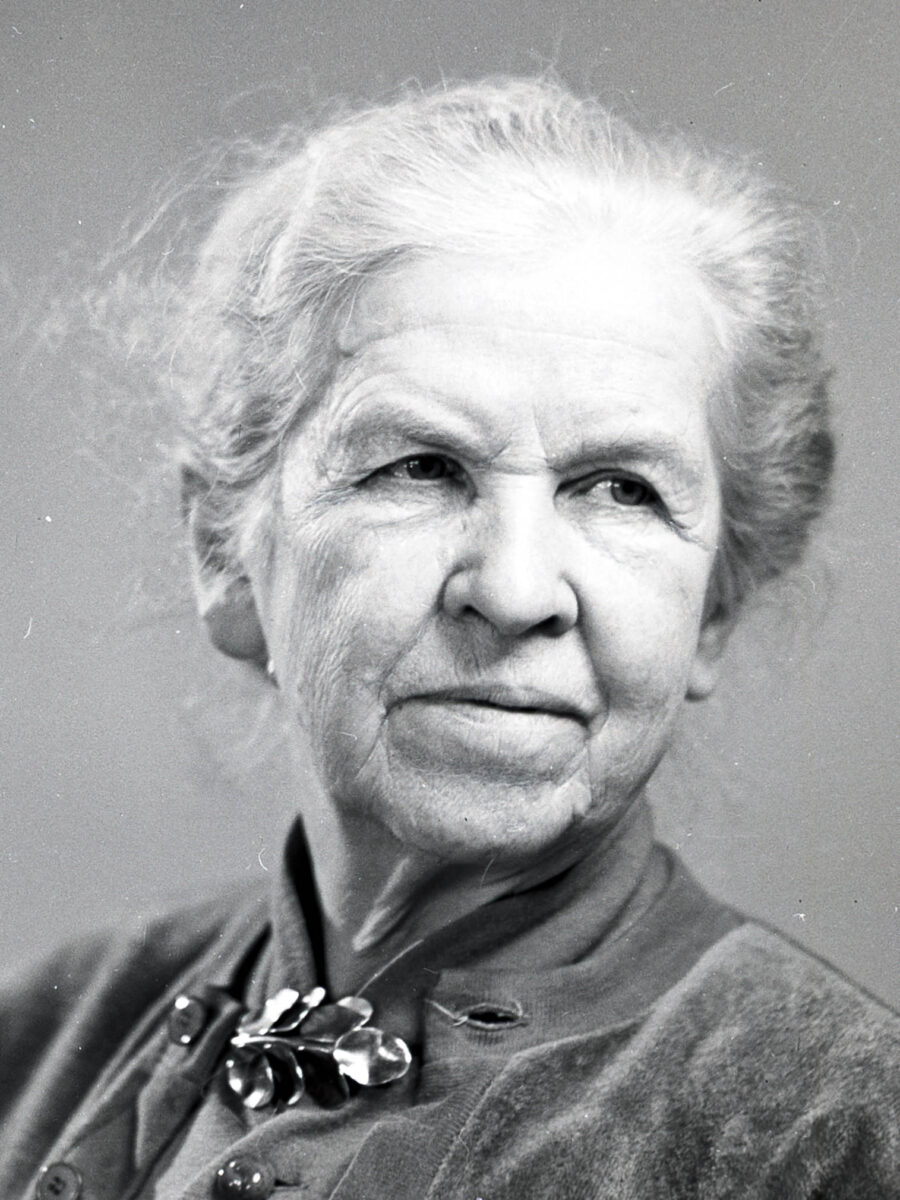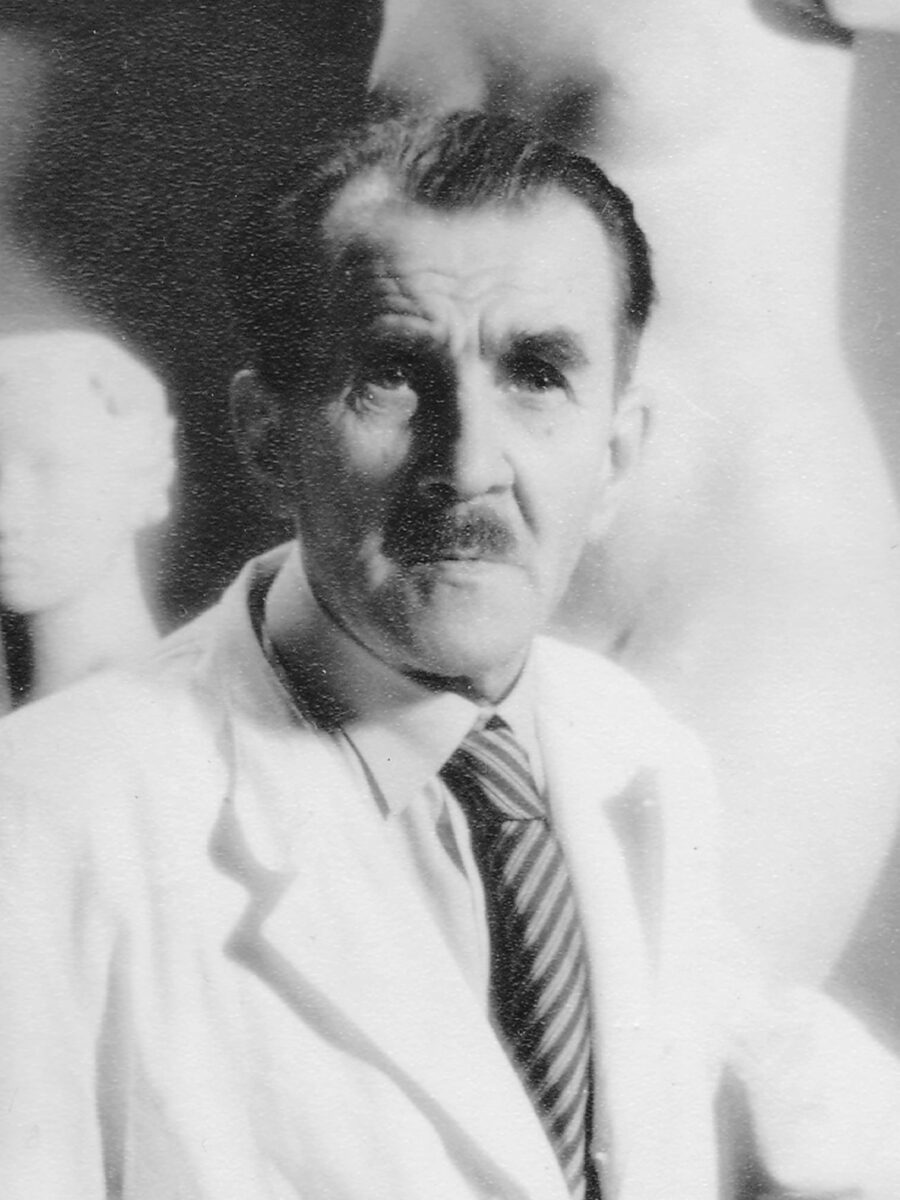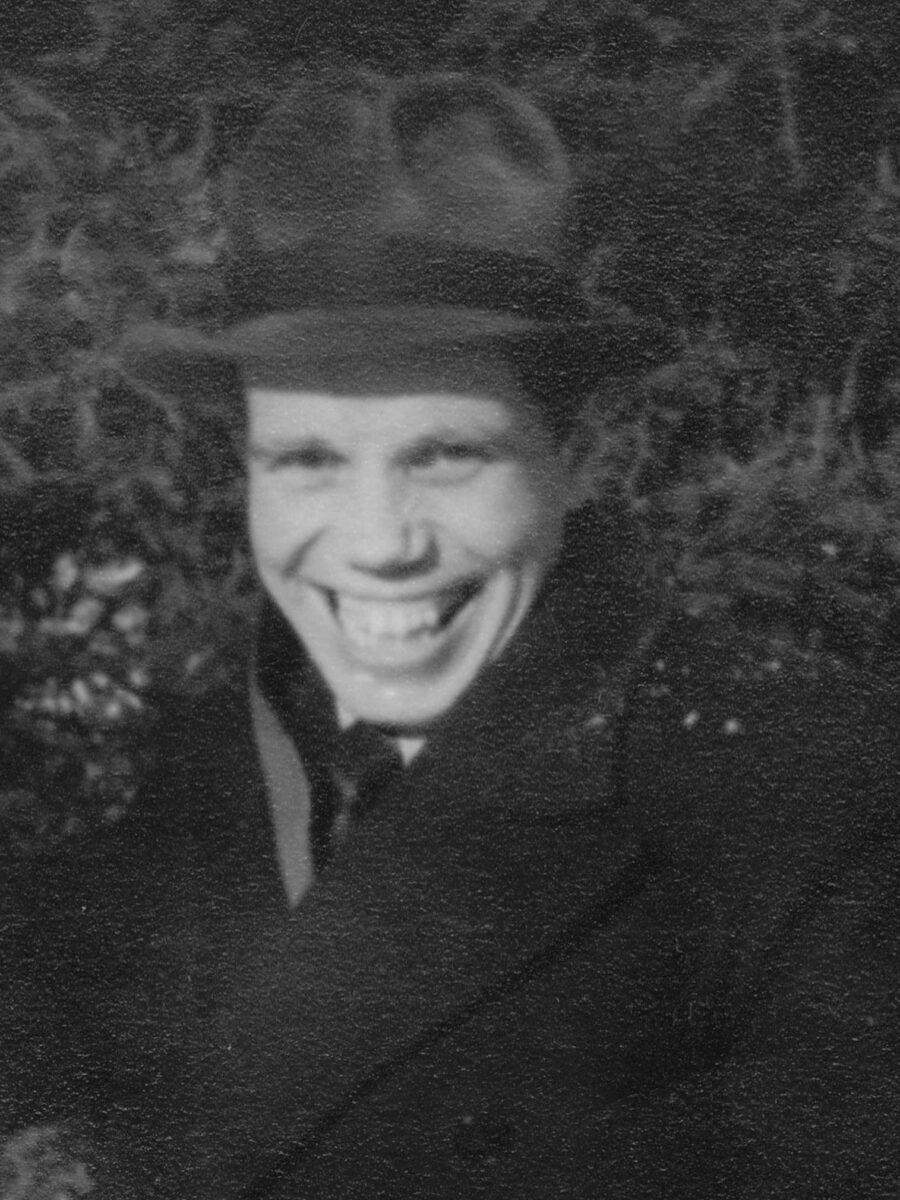BY THE RECORD PLAYER
Their paths had crossed a few times over the years, but their first proper encounter came in 1955 when they met over the gramophone at the Artists’ Guild Christmas party in Helsinki. They had both brought their own records and were keen to hear them played. Despite Tove’s invitations, they didn’t dance together that night.
Tove then received a Christmas card from Tuulikki Pietilä, featuring a drawing of a stripey cat, and their feelings for one another deepened. A bitter winter lingered and the snowdrifts were high in March 1956 when Tove first visited Tuulikki’s studio in faraway Töölö. They shared a bottle of wine and played their new French records. Bonding over their shared passion for music became an important part of their relationship. The following year, Tove Jansson published her sixth Moomin book Moominland Midwinter (1957), in which Moomintroll meets Too-ticky and learns of the uncertain nature of winter. In some of Tove’s letters she even calls Tuulikki ‘Too-ticky’ sometimes, but in private the nickname was soon shortened to Tooti. In the comic series Moomin and the Sea (1957) the character introduces herself with the words: “I am Too-ticky, I’m looking for driftwood.”
Tove Jansson is open about the fact that Too-ticky was closely modelled on Tuulikki Pietilä and the similarities between them are many. Just like Too-ticky, Tuulikki was a craftswoman who created her own world in her studio. Her myriad interests included literature and film, and her well-crafted bookshelves – which also displayed her ever-growing cumulation of home videos – lined the walls of her home. Interestingly, she collected editions of Daniel Defoe’s classic novel Robinson Crusoe.
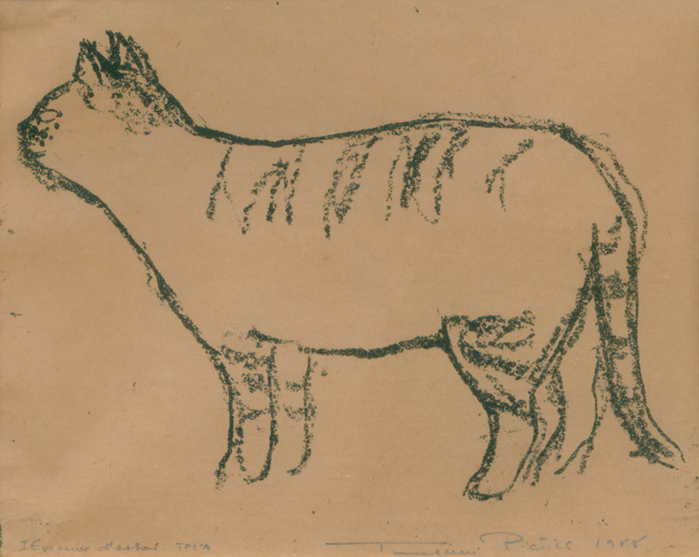
 The Christmas card sent to Tove Jansson by Tuulikki Pietilä in 1955.
The Christmas card sent to Tove Jansson by Tuulikki Pietilä in 1955. 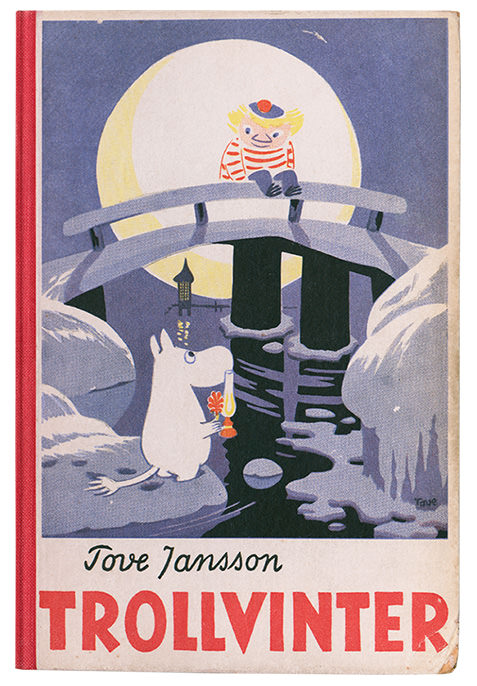
 Tuulikki Pietilä was the role model and inspiration for the character Too-ticky, introduced in the book Moominland Midwinter.
Tuulikki Pietilä was the role model and inspiration for the character Too-ticky, introduced in the book Moominland Midwinter. Their paths had crossed a few times over the years, but their first proper encounter came in 1955 when they met over the gramophone at the Artists’ Guild Christmas party in Helsinki. They had both brought their own records and were keen to hear them played. Despite Tove’s invitations, they didn’t dance together that night.
Tove then received a Christmas card from Tuulikki Pietilä, featuring a drawing of a stripey cat, and their feelings for one another deepened. A bitter winter lingered and the snowdrifts were high in March 1956 when Tove first visited Tuulikki’s studio in faraway Töölö. They shared a bottle of wine and played their new French records. Bonding over their shared passion for music became an important part of their relationship. The following year, Tove Jansson published her sixth Moomin book Moominland Midwinter (1957), in which Moomintroll meets Too-ticky and learns of the uncertain nature of winter. In some of Tove’s letters she even calls Tuulikki ‘Too-ticky’ sometimes, but in private the nickname was soon shortened to Tooti. In the comic series Moomin and the Sea (1957) the character introduces herself with the words: “I am Too-ticky, I’m looking for driftwood.”
Tove Jansson is open about the fact that Too-ticky was closely modelled on Tuulikki Pietilä and the similarities between them are many. Just like Too-ticky, Tuulikki was a craftswoman who created her own world in her studio. Her myriad interests included literature and film, and her well-crafted bookshelves – which also displayed her ever-growing cumulation of home videos – lined the walls of her home. Interestingly, she collected editions of Daniel Defoe’s classic novel Robinson Crusoe.

